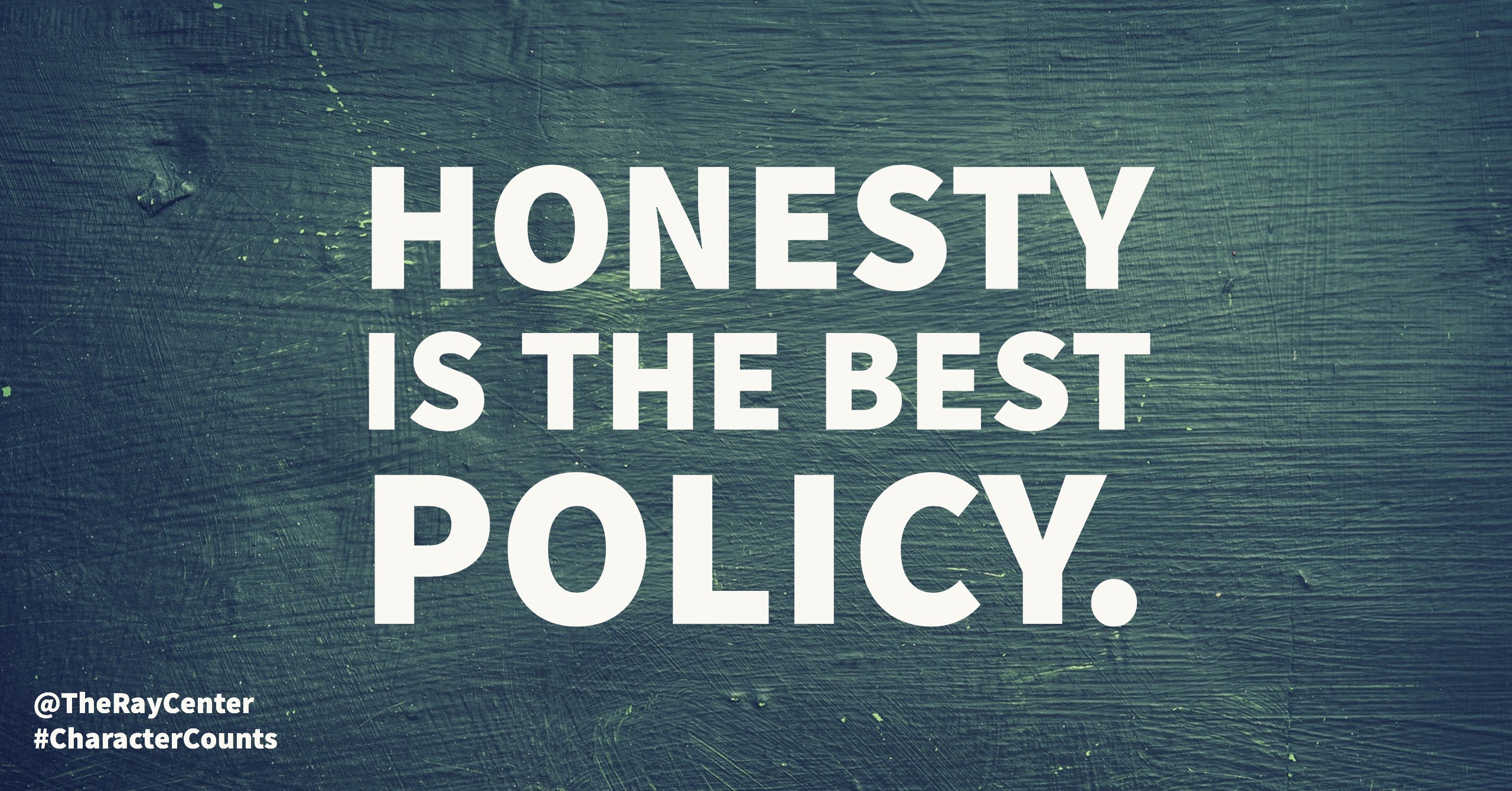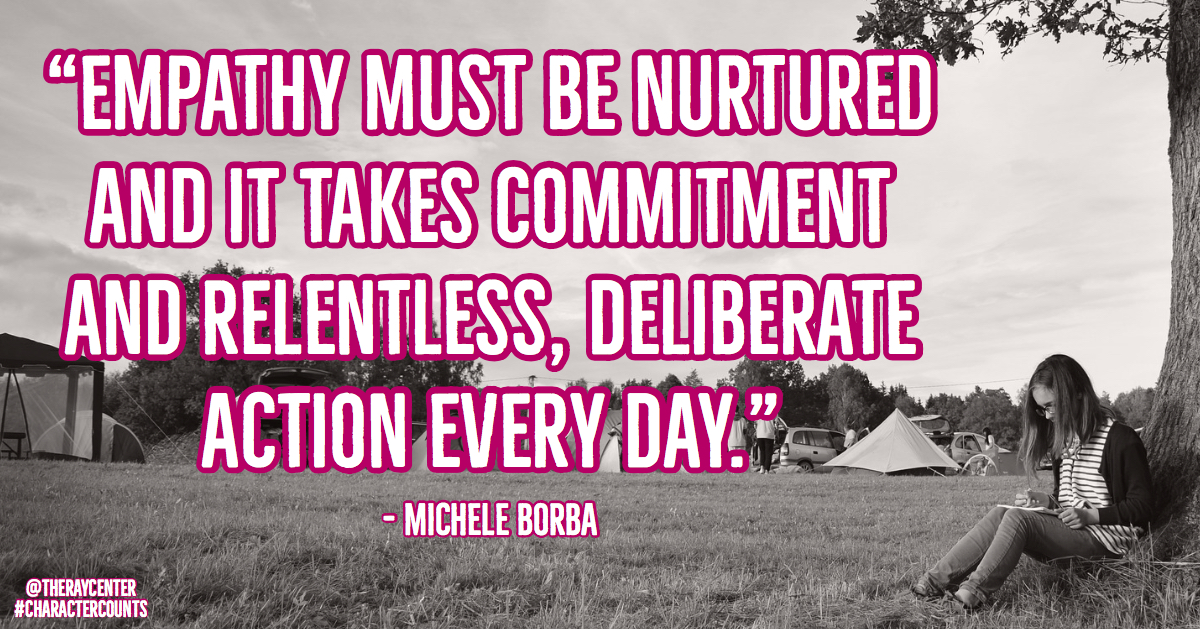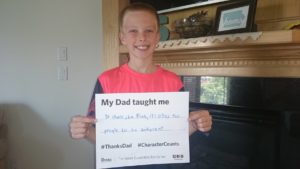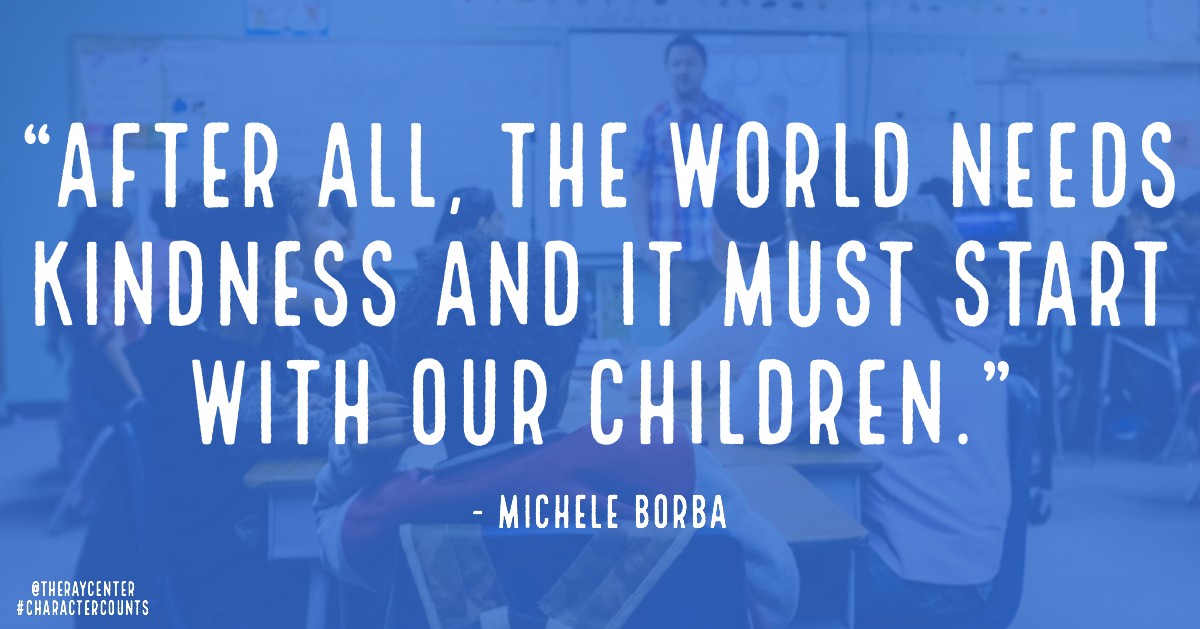Empathy is the ability to identify with and feel for another person. It’s the powerful quality that halts violent and cruel behavior and urges us to treat others kindly. Empathy emerges naturally and quite early, which means our children are born with a huge built-in advantage for success and happiness. But although children are born with the capacity for empathy, it must be nurtured and takes commitment and relentless, deliberate action every day and can’t be left to chance.
Here are 42 simple ways to help us raise empathetic, kind-hearted children despite a plugged-in, me-centered culture.
These ideas are from my latest book, UnSelfie: Why Empathetic Kids Succeed in Our All-About Me World (Touchstone, June 2016), which is chock-full of research-based, proven strategies to boost empathy and teaches the nine essential habits of empathy (Emotional Literacy, Moral Identity, Perspective Taking, Moral Imagination, Self-Regulation, Practicing Kindness, Collaboration, Moral Courage and Altruistic leadership). You’ll also find social-emotional learning skills, inspiring stories of children, examples from schools around the world. None cost a dime or take a Ph.D. to implement, but using them will help us raise what we all hope for: good people with strong minds and caring hearts.
1. Talk feelings. Kids need an emotion vocabulary to discuss feelings and guidance to become emotionally literate. Point out feelings in films, books, or people and use emotion words.
2. Be an emotion coach. Find natural moments to connect face-to-face, listen, and validate your child’s feelings while boosting emotional literacy (“You look happy. You seem sad.”)
3. Share kind deeds. Let’s not assume kids know how to show others they care. Tune them up! “That girl looks like she could use a hug.” “I bet that boy hopes someone asks him to play.
4. Make teamwork and caring a priority Insist that they consider others, even when it inconveniences them.
5. Teach: “Always look at the color of the talker’s eyes.” Kids must learn to read people’s emotions face to face, so enforce the “color at the talker’s eye” rule to help them use eye contact, and pick up facial expressions, voice tone and emotional cues.
6. Make kindness matter. Instead of, “I want you to be happy.” Stress, “I want you to be kind.”
7. Use “Feels + Needs” formula. Draw attention to people’s feelings, and then ask your child to guess what the person might feel or need in order to change his mood or be comforted.
8. Start kid book clubs! It’s a fun way for parents to connect with their kids and they with peers while boosting empathy and a love of reading. Try: The Mother-Daughter Book Club
9. Point out the impact of uncaring. When you see lack of caring or unkindness, don’t be afraid to lay down the law and say ‘Not in this family.’
10. Use the “2 Kind Rule”: Get kids in the habit of being kind. “Everyday you leave this house I expect you to say or do at least two kind things to someone else.”
11. Develop a caring mindset. Help your child see himself as kindhearted by praising
12.Use nouns, not verbs. Using the noun ‘helper’ may motivate children to help more. So if you want your child to see himself as a caring person, use nouns.
13. Focus on character. Praising kids’ character helps them internalize altruism as part of their identities. So use labels that stress your child’s kind-heartedness. “You’re the kind of person who likes to help others.” Or “You’re a considerate person.”
14. Model kindness. Want a caring child? Model the behaviors you want your child to adopt.
15. Do five kind acts a day. One study found that kids who did five kind acts in one day (like writing a thank-you to a teach, doing someone’s chores, working a shelter) – instead of spreading their acts over a week – gained the biggest happiness boost t the end of a six-week study period. So encourage kids to get on a kindness brigade.
16. Make kindness a regular happening. Set an empty box by your door for kids to put gently used toys, books, and games. When filled, deliver it together to a shelter or needy family.
17. Get kids to reflect on kindness. Instead of always asking, “What did you learn today?” Try: “What’s something kind you did? Or “What’s something nice that someone did for you?”
18. Imagine how the person feels.To help your child identify with the feelings of others is to have him imagine how the other person feels about a specific circumstance.
19. Share good news. Cut out news stories about kids who are doing caring deeds and share them with your child and friends to inspire their hearts to do the same.
20. Stress the impact. Help kids see how caring might make others feel. “How do you think Grandma will feel when she gets your card?” “Make your face look like Sally’s when she opens your gift. You’re right, she’ll be so happy.”
21. Make kindness a routine. Kindness is strengthened by seeing, hearing and practicing kindness. So find simple ways to tune it up and weave it into daily routines.
22. Reduce MEs and increase your WEs. For instance: What should we do?” “Which would be better for us?” “Let’s take a ‘We’ vote, to and out what we ”
23. Halt the “parading.” Praise when deserved, but focus on your child’s “inside-out” qualities: their kindness, respect, courage so she sees herself as a caring person.
24. Make sure at least half your questions are about your child’s friends. You’ll teach your child to think about the world in a different way—that it’s not about
25. Create a “save, spend, give” system. Make allowances come with the caveat that kids give a predetermined small portion to the charity of their choice as well as saving a portion.
26. Make service a family affair. Provide opportunities for your child to experience giving to others in your community.
27. Help your child create a “caring code.” Talk to your child often about the kind of person he wants to become, how he wants to make other feel, and what he stands for.
28. Urge kids to serve. Encourage your kids and friends to start a “Care About Others Club” in their neighborhood, school, scout troop, faith group, or community organization.
29. Give back frequently. Don’t assume that a one time visit to the Food Bank will open your kids’ heart. Empathy is more likely to be expanded with frequent face-to-face visits.
30. Teach copers. Self-regulation helps keep empathy open so teach your child to use deep, slow breaths (“exhale twice as long as you inhale”) to reduce stress and manage strong emotions at the first sign of stress.
31. Switch sides. Sibling battle or friendship tiff? Ask conflicting parties involved to “reverse sides” and tell you what happened, but from the other’s side” to stretch perspective taking.
32. Be “feeling detectives.” Encourage kids to “investigate” how other people might be feeling. “Listen to the boy’s voice. How do you think he feels?” “Look how that girl has her fists so tight. See the scowl on her face? What do you think she’s saying to the other girl?”
33. Choose a summer camp that stresses fun. A diverse mix of campers doesn’t hurt either!
34. Set regular “unplugged” times. Empathy is learned face to face. Reclaim conversation!
35. Hold family movie nights. Films can be portals to help our children understand other worlds and other views, to be more open to differences and cultivate new perspectives.
36. Insist that kids read! Not only does reading literary fiction (Charlotte’s Web, Wednesday Surprise, Wonder) boost kids academic performance, but it also boosts empathy.
37. Find ways to gain a new view. Depending on age you might visit a nursing home, homeless shelter, animal shelter, or soup kitchen. The more kids experiences different perspectives, the more likely they can empathize with others whose needs and views differ from hers.
38. Ask, “How would you feel?” Post questions to help your child think about how she would feel if someone had done the same behavior to her. “Lucas, how would you feel if Aaron yelled out that you can’t hit?” “How would you if someone said that to you?”
39. Use real events. The newspaper or television news is rich with possibilities to stretch kids’ empathy. “The fire destroyed their homes. What do you think those kids are feeling and thinking? What can we do to let them know we care?”
40. Capture caring moments. Make sure to display prominently photos of your kids engaged in kind and thoughtful endeavors so they recognize that “caring matters.”
41. Use “earshot praise.” Let your kids overhear (without them thinking they’re supposed to) you describing those qualities to others. “I’m so proud of how kind my child is because…”
42. Make a kindness jar. Each time a parent or child sees another member act in a kind way, they add a small stone or plastic bead) to a large plastic jar. Review the kind acts daily, and when full, donate the money to a charity of your family’s choice.
Above all, keep caring about kids!
Dr.  Michele Borba is an educational psychologist, parenting expert, TODAY show contributor and author of 22 books including The Big Book of Parenting Solutions: 101 Answers to Your Everyday Challenges and Wildest Worries and UnSelfie: Why Empathetic Kids Succeed in Our All-About-Me World
Michele Borba is an educational psychologist, parenting expert, TODAY show contributor and author of 22 books including The Big Book of Parenting Solutions: 101 Answers to Your Everyday Challenges and Wildest Worries and UnSelfie: Why Empathetic Kids Succeed in Our All-About-Me World
Adapted from UnSelfie: Why Empathetic Kids Succeed in Our All-About-Me World which has dozens of strategies such as these to raise kind-hearted kids as well as stories, examples, research, social-emotional learning skills and habits all to help our kids become more compassionate and kind-hearted.
Check out: micheleborba.com or follow me on Twitter @micheleborba.

 Frank is an award-winning author. He has written five books and over 300 articles. Frank was recently named one of “America’s Top 100 Thought Leaders” and nominated as one of “America’s Most Influential Small Business Experts.” Frank has served on several boards and has consulted to some of the largest and most respected companies in the world. Additionally, FrankSonnenbergOnline was named among the “Best 21st Century Leadership Blogs” and among the “Top 100 Socially-Shared Leadership Blogs.” Frank’s new book, Follow Your Conscience, was released November 2014. © 2016 Frank Sonnenberg. All rights reserved.
Frank is an award-winning author. He has written five books and over 300 articles. Frank was recently named one of “America’s Top 100 Thought Leaders” and nominated as one of “America’s Most Influential Small Business Experts.” Frank has served on several boards and has consulted to some of the largest and most respected companies in the world. Additionally, FrankSonnenbergOnline was named among the “Best 21st Century Leadership Blogs” and among the “Top 100 Socially-Shared Leadership Blogs.” Frank’s new book, Follow Your Conscience, was released November 2014. © 2016 Frank Sonnenberg. All rights reserved.

 As we celebrate Father’s Day, think about what your dad taught you.
As we celebrate Father’s Day, think about what your dad taught you. 
